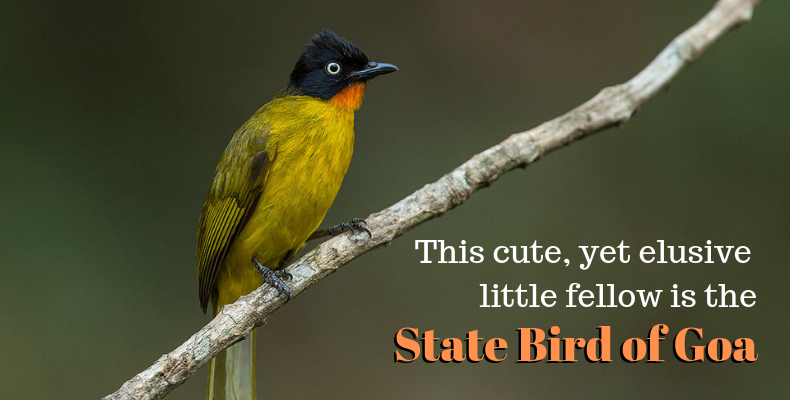Did you know that Goa has close to 500 different species of birds within its political boundary? That’s amazing for being the smallest state in India. So amazing, in fact, that in the last three decades, Goa has been recognised as one of the top birding destinations, especially for European bird watchers. They then go on to generate reports and publications that lead to a robust database of ornithological data. The first of these ‘databases’ was a comprehensive checklist of birds, created by Heinz Lainer. He listed 382 species, which he later revised to 420. The list kept growing as other ornithologists such as Parag Rangneka, and Pronoy Baidya and Mandar Bhagat added their data. The most updated checklist which can be found here records 473 species of which 448 have been photographed, 232 have audio recordings of call/song, and 160 have been examined in hand and deposited in museums across the world. Of all these beautiful species of birds, one stands out as the State Bird of Goa – the Flame-throated Bulbul.

One bird, many names
The Flame-throated Bulbul has a bit of an identity crisis, going by a couple of different names. It’s also referred to as the Black-crested Bulbul (or Black-headed Bulbul)l or the Ruby-throated Bulbul. Regardless of what you choose to call it though, the Flame-throated Bulbul is fairly easy to identify. The back of the Bulbul has a beautiful olive green and yellow shade, while the underside is completely yellow. The distinguishing factor and reason for the name is the triangular shaped patch of orange-red on its throat and the contrasting black head with white iris. Their call is similar to that of the red-whiskered bulbul – two to three tinkling notes. They usually hang out in groups, foraging in the forest canopy for berries and small insects.
The Flame-throated Bulbul’s natural habitat is around the Western Ghats from southern Maharashtra and Goa southwards. Being a predominantly forest bird, you will rarely see it in any other habitat, except for maybe areas of dense foliage, and coffee plantations. The Flame-throated Bulbul is omnivorous. They sometimes hang out in flocks of other species as well, looking for insects, or foraging for berries or other fruits.
The makings of a State bird
I’m sure at this point you’re wondering how and why this inconspicuous little Bulbul became the State bird of Goa; especially when it is so hard to spot. Well, to trace the honour of the title of State bird of Goa, we need to go back almost half a century to 1972. During the Portuguese occupancy, very little was known about the bird life of Goa, unlike the rest of India. So, the then Conservator of Forests- Goa, Daman & Diu, S. S Bhattee invited renowned ornithologist, Dr Salim Ali to conduct an ornithological survey of Goa. During his survey, Dr Ali and his team reported 154 species from Goa and at the same time were influential in nominating the Ruby-throated yellow bulbul (Pycnonotus gularis) as the State bird of Goa. Since then, the title has not changed, though the bird itself went through its own name changes.

If you’re hoping to sight one of these beautiful creatures, thankfully you won’t have to go as far as the Western Ghats. Due to heavy mining in the area, the Flame-throated Bulbul along with other species of birds native to the area have been forced to abandon their natural habitat. Many of them have now made areas such as Bondla Wildlife Sanctuary, Bhagwan Mahavir Wildlife Sanctuary, Mollem National Park, Netravalli and Cotigao Wildlife Sanctuary their home. There have also been reports of this species sighted in Betki- Marcela, Keri-Ponda and Dhargalim.
What are your thoughts on the Flame-throated Bulbul being the State bird of Goa? Have you seen one? Let us know in the comments below.


